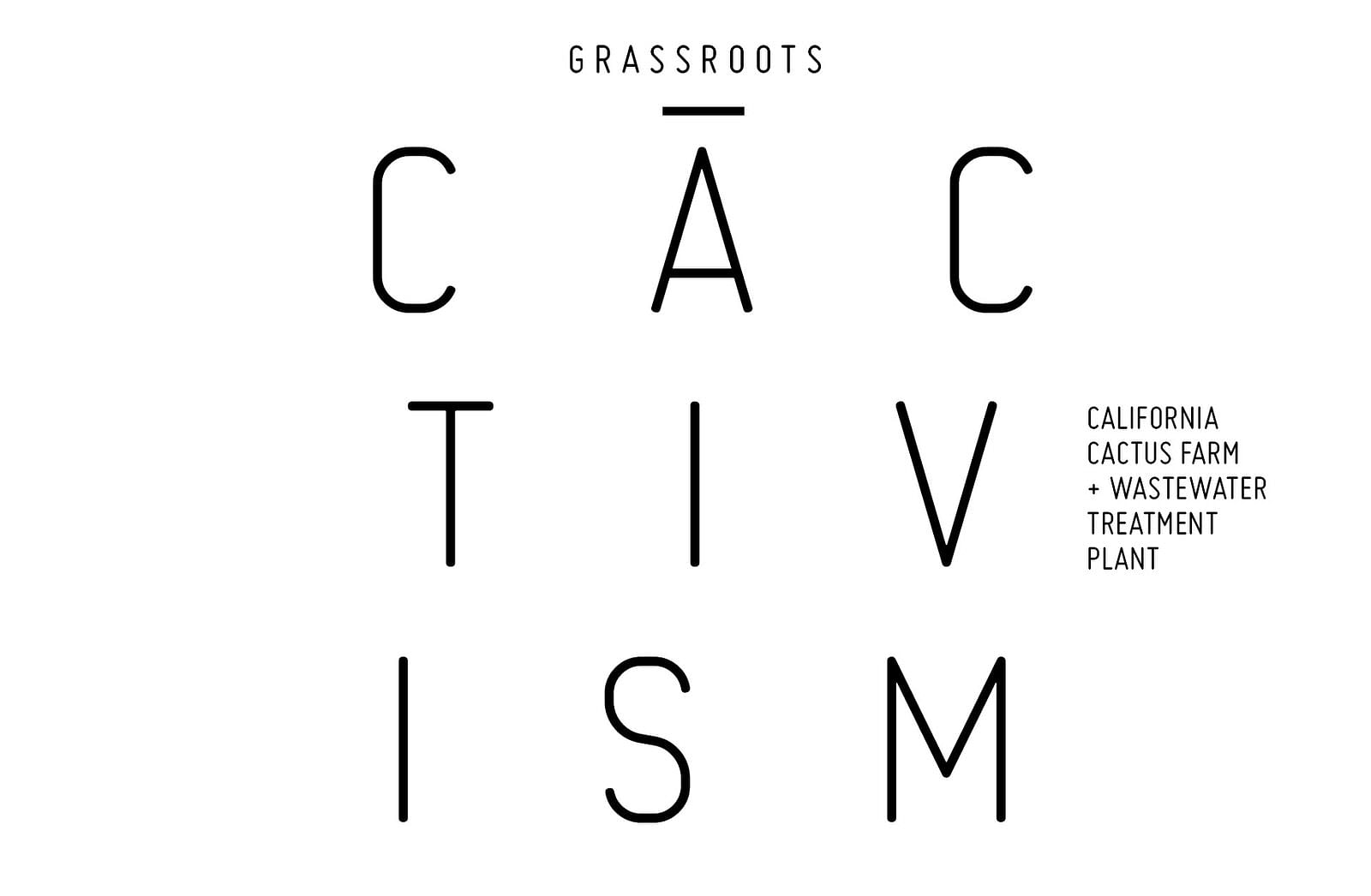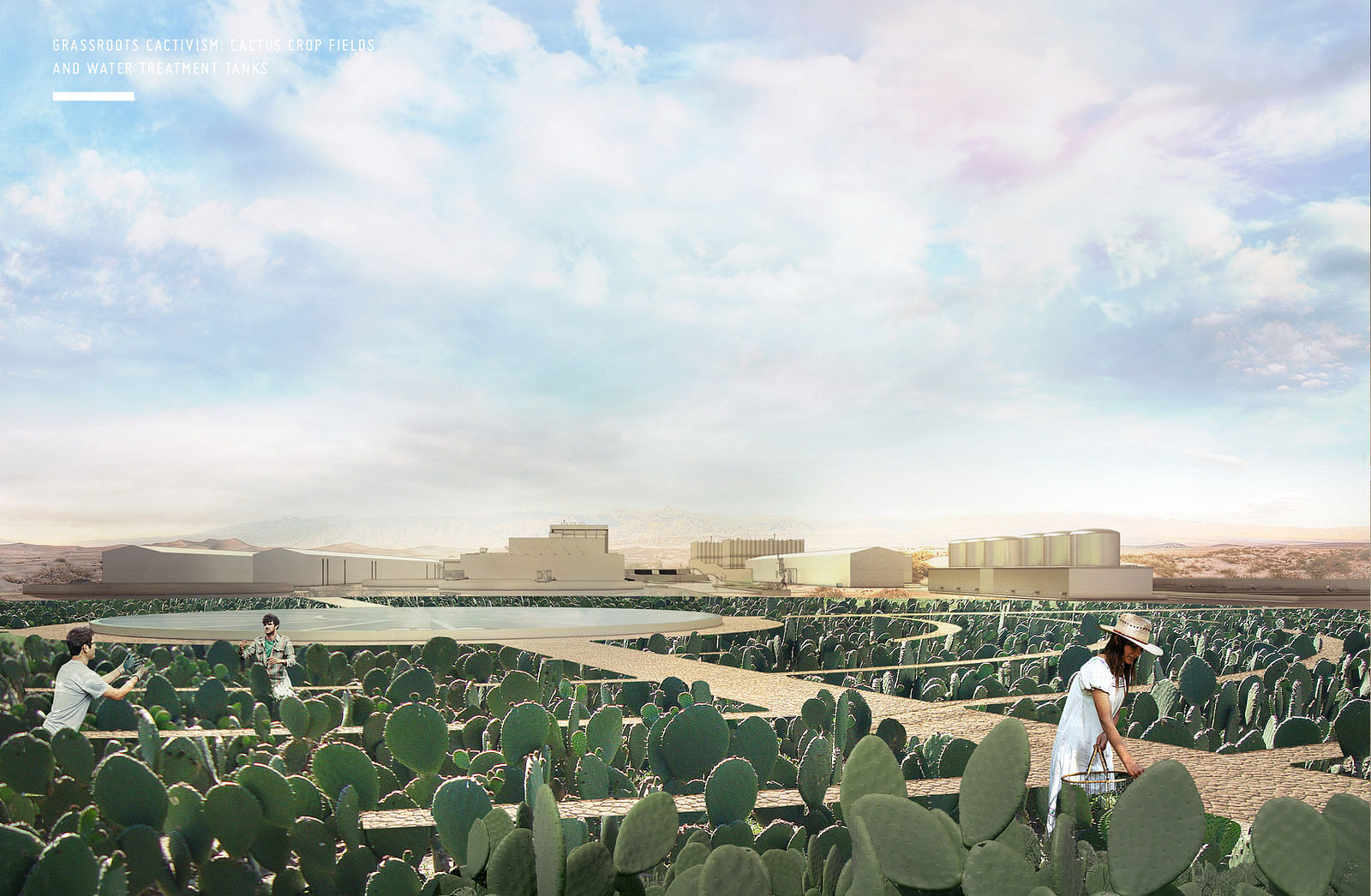
Grassroots Cactivism, by Ali Chen
California is entering the fourth year of an epic drought. Urban households have reduced water usage by 25%. However, legislation does not apply to farmers, while 80% of the state's water usage goes towards agricultural production. A large percentage of that water goes towards crops that feed livestock. Efforts to conserve water need to target these water-intensive aspects of the farming industry.
California's unique arid and mediterranean climate plays host to a variety of indigenous species. Among these is the drought-tolerant nopales cactus, otherwise known as the prickly pear. It has existed as a food source in local culinary traditions for many centuries, and is also commonly used as fodder for livestock in times of drought.

There is another lesser-known use of the nopales: its pulp acts as a cleaning agent for water. Locals in Mexico have often dumped the water used to cook cactus into polluted rivers and streams. The 'mucilage' or inner cactus pulp has also been tested and used in oil spills. Cactus pulp was found to disperse crude oil efficiently at much lower concentrations than synthetic dispersants.
At our cactus farm we propose to use this low-tech solution to improve and revolutionize existing wastewater management systems, as well as mitigate water usage in farming by supplying a crop that requires little to no water. As a hardy plant that grows locally, this cactus farm can be located anywhere in California. However, it is ideal to locate it near an existing reservoir for convenient releasing of purified water. 

A portion of the cactus grown at the farm will be harvested and distributed for human consumption. The pulp of another portion of the crop will go directly into the bio-reactors at the on-site wastewater purifying plant, while the remainder will be hand-processed into fodder for distribution within California and as well as exported.
The farm will not only be a local attraction, it will aim to attract visitors from all over by hosting an eco-resort marketed towards the health-conscious modern traveler, with cooking workshops, highly-rated fine dining, a water museum, and various resort amenities. The goal is to market the use of cacti in contemporary cuisine, grow awareness, provide funding for research, and slowly increase demand for a crop that can eventually replace other water-intensive forms of vegetable and fodder.

Check out the image gallery for Grassroots Cactivism's complete presentation.
Click here to see the other winners in both the Pragmatic and Speculative categories!
2 Comments
A very impressive project. Congratulations!
My grandmother used to bread and fry prikly pear pads...really good. old school Sicilian dish...I eat the fruit of all the time...
Block this user
Are you sure you want to block this user and hide all related comments throughout the site?
Archinect
This is your first comment on Archinect. Your comment will be visible once approved.